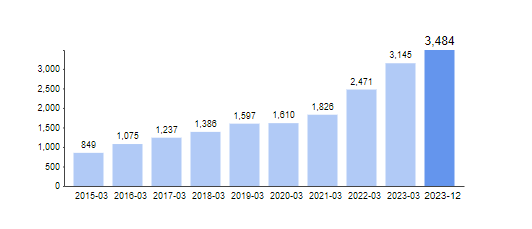20 Recommended Ways For Choosing Ai Trading Bot Websites
20 Recommended Ways For Choosing Ai Trading Bot Websites
Blog Article
Top 10 Tips On Assessing The Ai And Machine Learning Models Of Ai Analysis And Prediction Of Trading Platforms For Stocks
In order to ensure that you have accurate, reliable, actionable insights, it is essential to assess the AI and machine-learning (ML) models employed by prediction and trading platforms. Models that are not designed properly or overly hyped-up could lead to inaccurate predictions, as well as financial losses. Here are the 10 best tips for evaluating AI/ML models for these platforms.
1. Know the Model's purpose and Approach
Clarity of objective: Decide the purpose of this model: Decide if it is for trading in the short term or long-term investment or risk analysis, sentiment analysis etc.
Algorithm Transparency: Make sure that the platform is transparent about what kinds of algorithms they employ (e.g. regression, decision trees neural networks and reinforcement-learning).
Customization - Find out whether you are able to modify the model to fit your investment strategy and risk tolerance.
2. Evaluation of Model Performance Metrics
Accuracy Verify the accuracy of the model's predictions. Don't rely only on this measure however, because it can be inaccurate.
Precision and recall. Test whether the model can accurately predict price fluctuations and minimizes false positives.
Risk-adjusted returns: Determine whether the model's predictions lead to profitable trades after accounting for risk (e.g., Sharpe ratio, Sortino ratio).
3. Test your model with backtesting
Performance history The model is evaluated with historical data to determine its performance under the previous market conditions.
Testing with data that is not the sample: This is crucial to prevent overfitting.
Scenario analysis: Test the model's performance under various market conditions (e.g., bull markets, bear markets high volatility).
4. Be sure to check for any overfitting
Overfitting signs: Look for models that have been overfitted. They are the models that perform exceptionally well on training data and less well on unobserved data.
Regularization: Check whether the platform uses regularization techniques like L1/L2 or dropouts to prevent excessive fitting.
Cross-validation: Ensure the platform uses cross-validation to determine the generalizability of the model.
5. Assess Feature Engineering
Relevant features - Make sure that the model incorporates relevant features, like volume, price or other technical indicators. Also, look at the sentiment data as well as macroeconomic factors.
Select features that you like: Choose only those features that are statistically significant. Beware of irrelevant or redundant information.
Dynamic feature updates: Check whether the model will be able to adjust to changes in market conditions or the introduction of new features in time.
6. Evaluate Model Explainability
Interpretation: Ensure that the model provides clear reasons for its predictions (e.g. SHAP values, the importance of the features).
Black-box models can't be explained Beware of systems that use complex models, such as deep neural networks.
User-friendly insights : Determine if the platform provides actionable information in a form that traders can easily understand.
7. Reviewing the model Adaptability
Changes in the market - Make sure that the model is modified to reflect changes in market conditions.
Continuous learning: Make sure that the platform regularly updates the model with fresh data to boost the performance.
Feedback loops: Make sure the platform incorporates feedback from users as well as real-world results to refine the model.
8. Examine for Bias during the election.
Data biases: Ensure that the training data are representative and free from biases.
Model bias: Verify whether the platform monitors the biases in the model's prediction and if it mitigates them.
Fairness - Make sure that the model you choose to use isn't biased towards or against particular sectors or stocks.
9. Assess the efficiency of computation
Speed: Check if your model is able to produce predictions in real-time or with minimum delay particularly for high-frequency trading.
Scalability Test the platform's capacity to handle large amounts of data and multiple users without performance degradation.
Resource usage: Check whether the model is using computational resources efficiently.
Review Transparency and Accountability
Model documentation: Ensure the platform is able to provide detailed documentation on the model's design, structure, training process, and its limitations.
Third-party validation: Find out whether the model was independently validated or audited by a third person.
Verify that the platform is equipped with mechanisms that can detect models that are not functioning correctly or fail to function.
Bonus Tips
User reviews and Case studies: Review user feedback, and case studies to determine the real-world performance.
Trial time: You can try an demo, trial or a free trial to test the model's predictions and the usability.
Customer support: Make sure your platform has a robust support for model or technical problems.
These suggestions will assist you to evaluate the AI and machine-learning models used by platforms for prediction of stocks to ensure they are transparent, reliable and compatible with your goals for trading. Read the top this hyperlink on ai stock price prediction for blog tips including chatgpt copyright, trade ai, ai stocks to invest in, ai options trading, chart ai trading, stock ai, stock analysis app, incite, investing ai, trade ai and more.
Top 10 Tips To Assess The Regulatory Conformity Of Ai Stock Forecasting/Analyzing Trading Platforms
When it comes to evaluating AI trading platforms, compliance with regulatory requirements is a crucial aspect. Compliance assists in ensuring that the platform operates within legal frameworks and protecting the privacy of users. Here are the top ten tips for assessing regulatory compliance.
1. Verify the Licensing & Registration
Regulatory Authorities: Make sure that the platform registered with the relevant regulatory authorities (e.g. SEC US, FCA UK and ASIC Australia) and also has an authorization.
Broker partnership: If the platform incorporates brokers, verify that brokers are also properly licensed and regulated.
Public records: You may check the official website of the regulatory body to find out whether the platform is registered and whether there have had any violations over the years.
2. Compliance with the Data Privacy Evaluation
GDPR - If your site operates within the EU or serves users from the EU make sure that it complies with GDPR.
CCPA -- California Consumer Privacy Act: Check for compliance with California users.
Data handling policies. Examine the platform's privacy policies and ensure that it clarifies how data about users is used to collect, share, and kept.
3. Examining anti-money laundering measures
AML Policies The platform should be equipped with strong AML (Anti-Money Laundering) policies to identify money laundering and stop it from happening.
KYC procedures. See the platform you use follows Know Your Customer processes for verifying user identity.
Review the platform's transaction monitoring. Does it monitor transactions and report suspicious activity to relevant authorities?
4. Check for your compliance with Trading Regulations
Market manipulation: Verify that the platform contains measures to prevent market manipulation, such as washing trading, spoofing.
Types of orders. Verify that the platform is in compliance with the regulations pertaining to order types (e.g. there is no illegal stop loss hunting).
Best execution : Make sure that the platform employs top execution techniques to execute trades at a competitive price.
5. Cybersecurity Compliance:
Data encryption: Verify that the platform safeguards the user's data while it is in transit and when it's in storage by encrypting it.
Response to incidents. Verify whether the platform has a plan of action for handling cyberattacks and data breaches.
Make sure to check for any certifications.
6. Transparency and disclosure: A Review
Fee disclosure: Ensure that the platform has clearly disclosed all fees, additional charges or hidden charges.
Risk disclosure: Make sure there are clear and explicit disclosures about the risk, especially for leveraged or high-risk trading strategies.
Performance reporting: Make sure that the platform offers clear and accurate information regarding the accuracy of its AI models.
7. Check for the conformity to International Regulations
Cross-border trading: If your trading involves international markets, you should ensure that your platform is compliant with the requirements of each regulatory jurisdiction.
Tax reporting: Determine the platform's tools or reports for users to adhere to tax laws.
Respect for international sanctions: Make sure the platform strictly adheres to these and doesn't allow trading with prohibited entities or countries.
8. Examine the records-keeping and audit trail
Transaction records: Ensure that the platform keeps complete records for purposes of regulation and audit purposes.
Logs of activity for users: Determine whether the platform records the user's activity, such as trading, logins, as well as modifications to account settings.
Audit-readiness: Check if the platform will be capable of generating all the required documentation and logs for an audit by a regulatory agency.
9. Assessment of Compliance to AI Specific Regulations
Algorithmic trading rules: If you're using a platform that supports algorithmic trading, ensure it is in compliance with relevant regulatory frameworks like MiFID II or Reg SCI in Europe and in the U.S.
Fairness and Bias: Ensure that the platform monitors biases and minimizes them within its AI models to guarantee fair trade.
Explainability. Certain regulations may require that the platform explain AI-driven prediction and decisions.
10. Review the User's Feedback and the The Regulatory History
User reviews: Use feedback from users to assess the platform's regulatory conformity.
Review the regulatory history to see whether any violations of the regulations have been committed, as well as penalties and fines.
Third-party auditors: Check if the platform is regularly audited by a third party to ensure it's adhering to the rules.
Bonus Tips
Legal consultation: Talk to a lawyer to ensure the platform is in compliance with all relevant regulations.
Trial period: Take advantage of a demo free or trial to assess the features of the platform that are compliant.
Support for customers: Ensure whether the platform is able to provide support to customers with issues or concerns relating to compliance.
These tips will help you assess the regulatory compliance of an AI trading platforms that predict and analyze stocks. You'll be able to select a platform that complies with the legal frameworks and safeguards your rights. Compliance not only reduces legal risks, but also increases confidence and trust in the platform's services. Check out the best continued about using ai to trade stocks for site examples including best stock analysis website, best artificial intelligence stocks, ai stock picker, ai stocks to invest in, ai chart analysis, stock analysis websites, ai stock prediction, investment ai, chart ai for trading, getstocks ai and more.